In-Depth with Mac OS X Lion Server
by Andrew Cunningham on August 2, 2011 8:00 AM ESTAddress Book
Now that we’ve spent what seems like an eternity on the ins and outs of OS X Server’s directory and management capabilities, the rest of the review will go by pretty quickly - most of the services are pretty simple to setup and don’t have a lot of moving parts.
The Address Book service, for example, is basically a giant on/off switch with an option to include your directory users’ information in the address book search.
To connect your client computer to the Address Book, go to Mail, Contacts & Calendars in System Preferences, click Other, and then elect to Add a Mac OS X Server account. Either select your server or type in its address, authenticate, and you’ll be asked which services you want to use (based on what services your server offers, and which ones you have permissions to use). If you’ve configured everything correctly, OS X will handle the rest.
You now have a shared, centralized address book for every computer on your network that requests it.
iCal
As with Address Book, the iCal service can begin to be used after the flip of a switch in Server.app, but this time around there are a couple other configurable options.
Mostly, these come in the form of “locations” (like particular buildings or rooms) and “resources” (like computers or projectors) - adding these to your server will make them available as separate calendars, allowing people to schedule time to use them. Designating users or user groups as “delegates” for each location or resource allows the user or users to approve (or disapprove) scheduled meetings.
Otherwise, it’s a pretty standard server for a pretty standard calendaring service: every user on your server gets his or her own calendar, and they can all share them with each other to see what they’re doing. No surprises here.
Connecting OS X clients to iCal servers is accomplished in the Mail, Contacts & Calendars section of System Preferences, just like Address Book. There’s also a simple web interface for the service that becomes available when you turn it on.
iCal web interface
iChat
The iChat service is another on/off switch service, for the most part - your only configurable options are to log chats to the server, and allow users on your server to communicate via iChat with users on another OS X Server (which Apple calls “server-to-server federation” - it’s enabled by default, though you can restrict it if you want).
Connecting to your iChat server is, like iCal and Address Book, accomplished via Mail, Contacts & Calendars in System Preferences.
The next two are a bit more universally applicable - one is to set a quota on your users’ mailboxes, and the next is to enable a Webmail interface for your service - this is accessible by default by typing [your server’s name]/webmail into your address bar, and brings up a webmail interface that is quite usable, though it’s nothing special.
You can also access your Mail service through Mail.app using the Mail, Contacts & Calendars preference pane (the last service for which this is true), or any ol’ POP or IMAP-enabled email client (since POP, IMAP, and SMTP are all supported protocols).
Your last option in Server.app relates to virus and junk mail filtering - there’s a checkbox for the former and a slider for the latter - and blacklisting of known malicious email servers.
If you go into Server Admin you’ll get much more advanced options for configuring and monitoring your mail server. You can view logs and setup email alerts, configure more advanced filtering options, control quotas and maximum message size, enable mailing lists, and control authentication options.
Mail Server is reasonably full-featured, but there’s no getting around the fact that there are better solutions out there - big, established organizations considering adding Mac servers to their fleet are already going to be using competing systems like Exchange (and Microsoft is going to offer support for Exchange that far surpasses whatever Apple provides for OS X Server, from the point of view of most enterprises).
On the other hand, smaller organizations with fewer resources are likely going to be better off going with Google Apps for Business or another equivalent, something that offers the Mail service’s functionality while outsourcing the backend headaches to someone else. However, if you’re a small organization that insists on maintaining full control over all its data and aren’t willing to outsource, the Mail service could be useful to you.


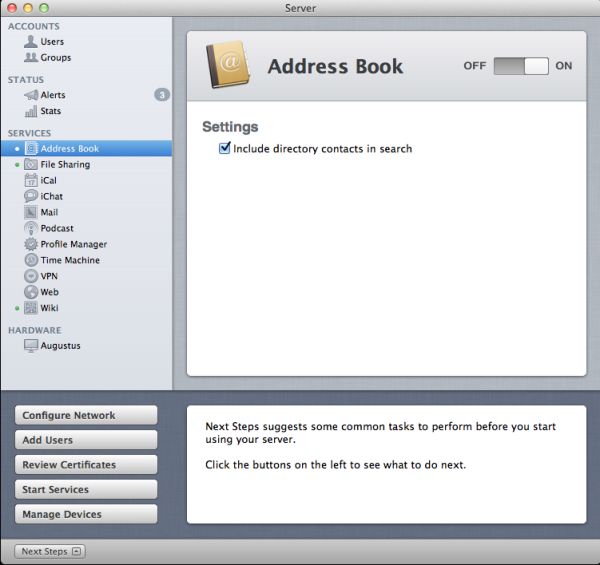
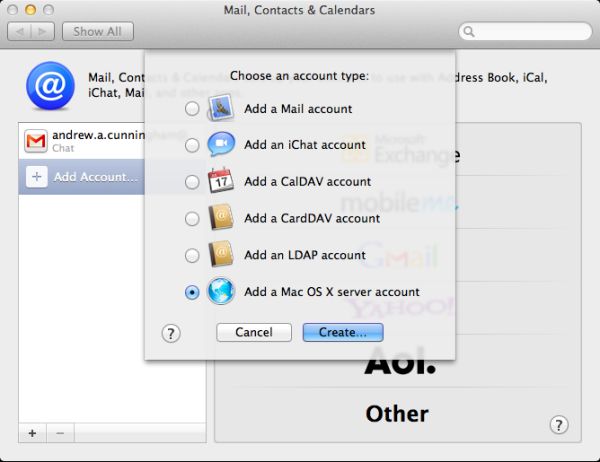
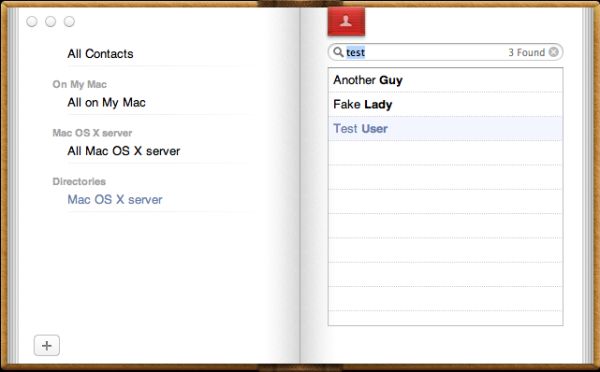
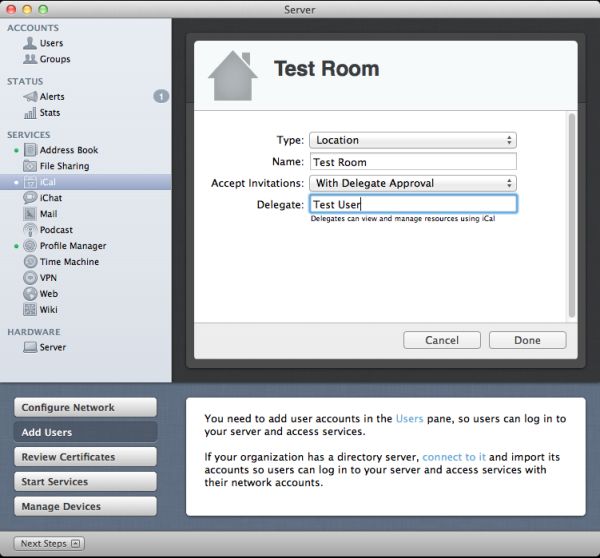



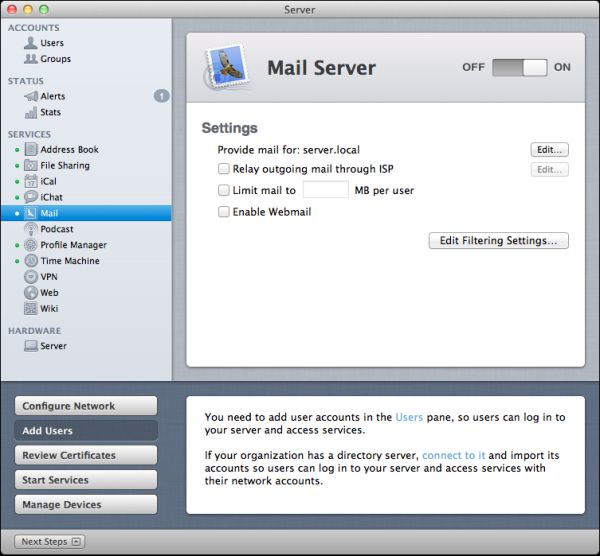
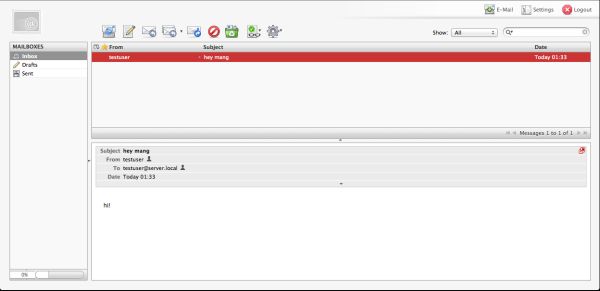









77 Comments
View All Comments
ltcommanderdata - Tuesday, August 2, 2011 - link
Given the shift in corporate policy from being Blackberry focused to adopting other smartphone platforms including iOS, I think most CTOs would take a look at OS X Server if only for the easier iOS device management features. I don't really see it replacing existing Windows servers though, particularly since Apple doesn't sell dedicated server class hardware anymore.quakerotis - Tuesday, August 2, 2011 - link
This is simply not true. OS X Server has been for us a very good performer, both in stability and ease of use. B3an, you must be speaking anecdotally because I am not a fanboy. There are many server technologies to choose from. this is one of the better ones.diskrete - Tuesday, August 2, 2011 - link
As an IT manager for a small company, I would definitely use Lion Server to manage Macs and iPhones.It in no way replaces existing Windows/Linux infrastructure. But recycling a Mac mini to use for managing Apple devices? Absolutely. It’s worth it just for the ability to create machine-based 802.1X profiles.
IT today is not about standardizing on one platform, it’s about using the right tool for the job.
sligett - Thursday, August 4, 2011 - link
Unix isn't a server platform anyone in their right mind would use?There are thousands upon thousands of small and medium businesses as well as schools that are hostage to expensive windows "experts" that have put a Windows server in their business. The client can't do a thing with the server without the expensive help of the expert. You don't see that as a viable market?
So many people speak out on the Internet as though "I can't use this" is equivalent to "no one can use this".
erple2 - Thursday, August 4, 2011 - link
To be fair, any infrastructure that's put in place by an "expert" tends to continue to have to be maintained by another expensive expert. Non-techies have problems with Macs just as much as non-techies have problems with Linux, or Windows machines.BTW, I've found that the mac "experts" that have put a mac server in their business are also very expensive to hire back for help.
There are some very very nice manageability features that OSX Server buys you that aren't all that simple to implement by relative novices in other environments...
cwatt - Monday, September 26, 2011 - link
Ha ha, you are really ignorant! I am currently rolling this out to a big organization and this article is a really big help.. BTW ... those inferior products are actually extremely good quality and very easily managed and a lot more secure than other platforms... You should not let your opinion get in the way of your judgment, you should make the best decision based on the environment not because you are a fanboy or you randomly hate really good products!blueeyesm - Tuesday, August 2, 2011 - link
I have to agree that managing iOS devices using OS X Server is probably their only ace in the hole. The rest of what this offering serves can be replicated/managed better under Linux. That being said, if Apple wanted to be really smart, they'd help their community devise methods in which to enhance a shopping experience, or other interacive experiences with an iOS or tablet device.That is, until cloud computing becomes the de facto standard and Apple ceases to offer a server or client to download, you just are expected to do everything via iTunes/iLife Cloud edition.
badjohny - Tuesday, August 2, 2011 - link
With its drop in price, and ability to install on any mac, I would love to see apple take OSX server and shape it into a WHS for mac. It looks like all or many of those things are available in OSX server, but the ease and convenience of using a WHS is unreal. Push the Home server aspect of OSX server and really make a use for it in a standard home. itunes server edition, Apple TV media server, IOS update manager, Shared home calendars, email, and family based websites come to mind. These are all things that It can currently do, but they all need some "apple magic" to make them very powerful and at the same time very easy for anyone to setup. Apple could easy include a option in the setup of a mac to have it search your network for a server. If it finds one have it ask if you want to enable the features. They could even leverage the icloud system and have it linked by your itunes account. They all the data could sync through the icloud service. enter your apple ID and your client is setup to use your server instantly.They could even make a personal iCloud options. Every picture/video you take have it saved over to the server also.
I understand that OSX server is a niche item in big business. Apple should admit defeat in enterprise setups and push server to a more person level. Have it compete with windows SBS and WHS but make it have the apple easy of use. They have a real product here, but like most home server options it seems to be more of a niche item.
Ratman6161 - Tuesday, August 2, 2011 - link
Basically Apple does not make or sell server grade hardware. Sure, if you look on their online store you will find a version of the Mac Pro that calls itself a server and comes with OSX Server installed. But there are a variety of things about it that make it not enterprise ready and more suited to small business or home servers. If Apple really wanted to be in the enterprise market then what they would absolutely have to do is to allow it to run as a virtual machine on all the major virtualization platforms. For example where I work we are a VMWare shop and no server software is coming in our door that will not run on VMWare Esx server.Its my theory thought hat they have no intention or desire to compete in the enterprise server market. If they did, there would be no reason for a price drop as most businesses in that market place would not have blinked at the $499 price or even the $999 price - both are a drop in the bucket compared to all the other costs associated with a data center. No, the price drop to me definitely signals that its their intent to be in the small business and home server market.
HMTK - Wednesday, August 3, 2011 - link
You're right, Apple does not have anything that could even remotely be called server hardware.There have been rumors that Mac OS can run as a vm on vSphere 5 (if you're ok with the licensing). If true you could run it on real servers and real SANs and use nice features like high availability. The only show stopper is probably licensing but I would think that is VMware were taking the trouble of making OS X run on their hypervisor they would have a deal with Apple.
AFAIC Max OS X Server would be interesting only for managing iOS devices.